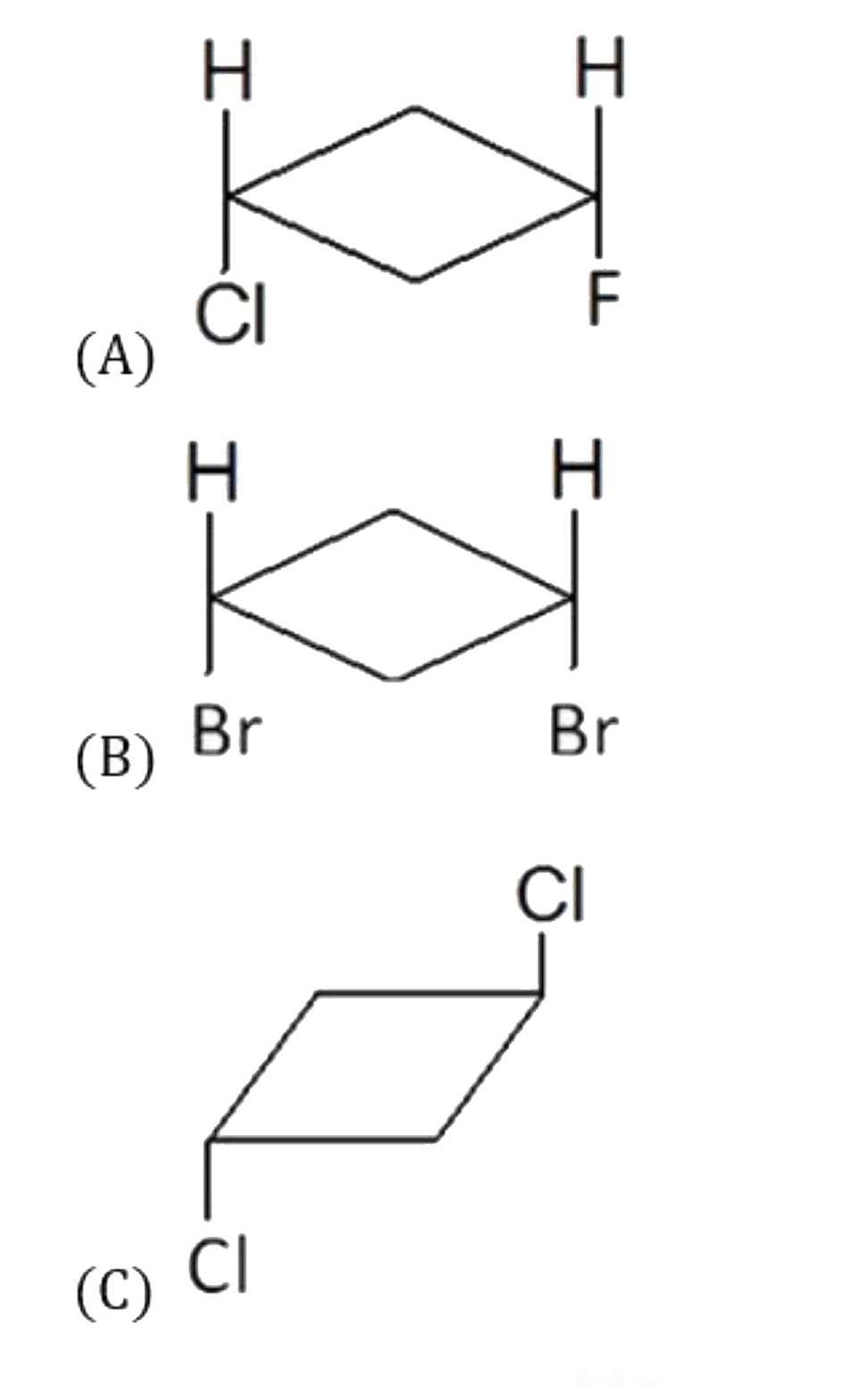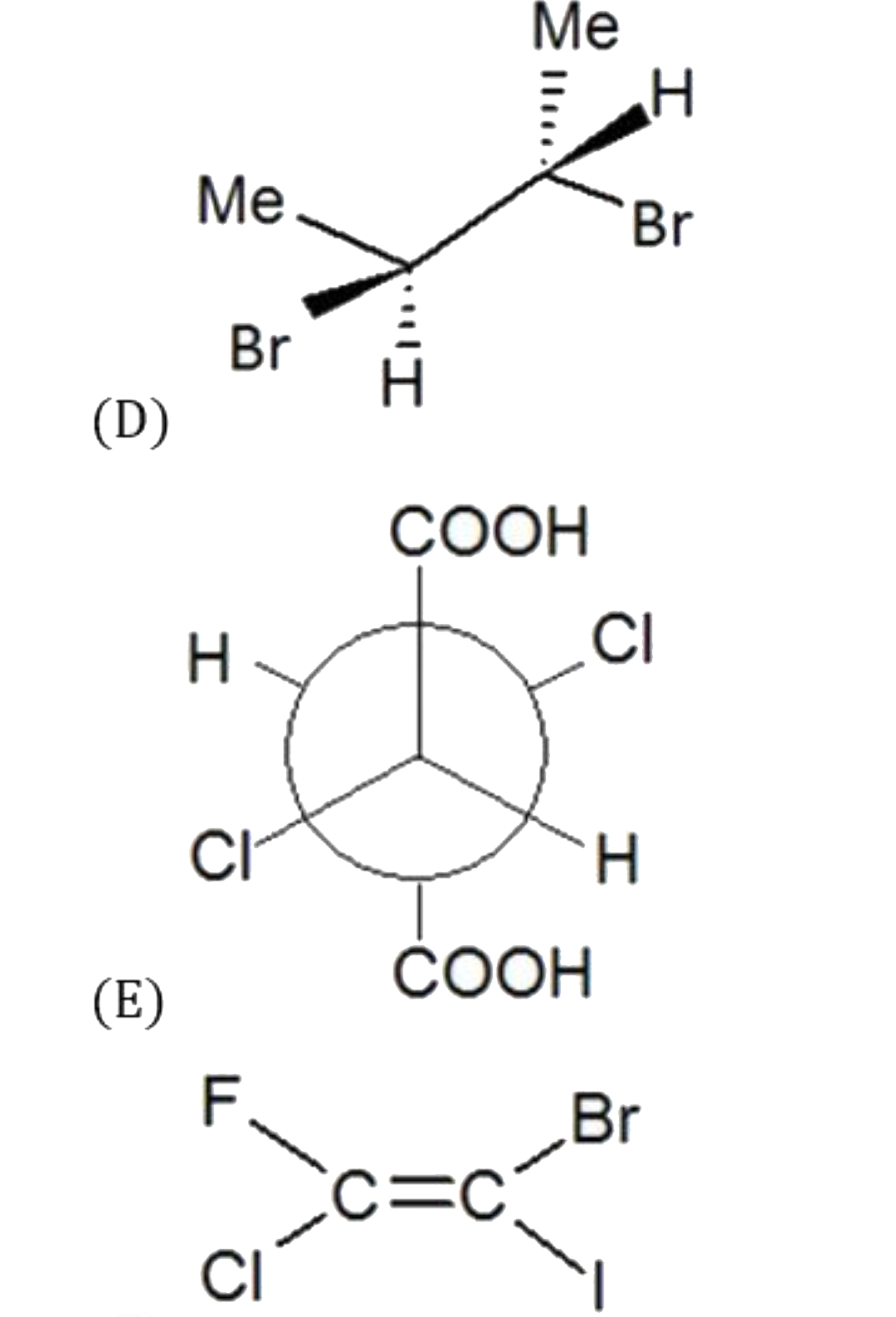What is the necessary and sufficient condition for a molecule to be optically active ?
To determine the necessary and sufficient condition for a molecule to be optically active, we can follow these steps:
1. Definition of Optical Activity:
- Optical activity refers to the ability of a substance to rotate the plane of polarized light. For a molecule to exhibit optical activity, it must be able to interact with polarized light in a specific way.
2. Chirality Requirement:
- The first necessary condition for a molecule to be optically active is that it must be chiral. Chirality means that the molecule cannot be superimposed on its mirror image.
3. Presence of Chiral Carbon:
- A common feature of chiral molecules is the presence of a chiral carbon atom. A chiral carbon is one that is bonded to four different atoms or groups. This unique arrangement allows for two non-superimposable mirror images, known as enantiomers.
4. Absence of Symmetry Elements:
- For a molecule to be optically active, it must not possess any symmetry elements. Symmetry elements include:
- Plane of symmetry: A plane that divides the molecule into two mirror-image halves.
- Center of symmetry: A point in the molecule where for every atom, there is an identical atom at an equal distance in the opposite direction.
- The absence of these symmetry elements ensures that the molecule is chiral.
5. Non-Superimposable Mirror Images:
- The final condition is that the molecule must have non-superimposable mirror images. This means that the mirror image of the molecule cannot be aligned perfectly with the original molecule, confirming its chirality.
Conclusion:
In summary, the necessary and sufficient condition for a molecule to be optically active is:
- The molecule must be chiral, which typically involves having a chiral carbon atom.
- It must not have any symmetry elements (like planes or centers of symmetry).
- It must have non-superimposable mirror images.
- Optical activity refers to the ability of a substance to rotate the plane of polarized light. For a molecule to exhibit optical activity, it must be able to interact with polarized light in a specific way.
- The first necessary condition for a molecule to be optically active is that it must be chiral. Chirality means that the molecule cannot be superimposed on its mirror image.
- A common feature of chiral molecules is the presence of a chiral carbon atom. A chiral carbon is one that is bonded to four different atoms or groups. This unique arrangement allows for two non-superimposable mirror images, known as enantiomers.
- For a molecule to be optically active, it must not possess any symmetry elements. Symmetry elements include:
- Plane of symmetry: A plane that divides the molecule into two mirror-image halves.
- Center of symmetry: A point in the molecule where for every atom, there is an identical atom at an equal distance in the opposite direction.
- The absence of these symmetry elements ensures that the molecule is chiral.
- The final condition is that the molecule must have non-superimposable mirror images. This means that the mirror image of the molecule cannot be aligned perfectly with the original molecule, confirming its chirality.
In summary, the necessary and sufficient condition for a molecule to be optically active is:
- The molecule must be chiral, which typically involves having a chiral carbon atom.
- It must not have any symmetry elements (like planes or centers of symmetry).
- It must have non-superimposable mirror images.
Topper's Solved these Questions
- BOOK - ICSECHAPTER - ORGANIC CHEMISTRY : SOME BASIC PRINCIPLES AND TECHNIQUES EXERCISE - SHORT ANSWER TYPE QUESTIONS110videos
ORGANIC CHEMISTRY : SOME BASIC PRINCIPLES AND TECHNIQUES
- BOOK - ICSECHAPTER - ORGANIC CHEMISTRY : SOME BASIC PRINCIPLES AND TECHNIQUES EXERCISE - ESSAY ( LONG ANSWER ) TYPE QUESTIONS42videos
ORGANIC CHEMISTRY : SOME BASIC PRINCIPLES AND TECHNIQUES
- BOOK - ICSECHAPTER - ORGANIC CHEMISTRY : SOME BASIC PRINCIPLES AND TECHNIQUES EXERCISE - REVIEW EXERCISES176videos
ORGANIC CHEMISTRY : SOME BASIC PRINCIPLES AND TECHNIQUES
- BOOK - ICSECHAPTER - HYDROGENEXERCISE - NCERT TEXT-BOOK EXERCISE (With Hints and Solutions)53videos
HYDROGEN
- BOOK - ICSECHAPTER - REDOX REACTIONS (OXIDATION AND REDUCTION)EXERCISE - NCERT TEXT-BOOK. EXERCISES ((With Hints and Solutions)69videos
REDOX REACTIONS (OXIDATION AND REDUCTION)
Similar Questions
Knowledge Check
- Question 1 - Select One or More
Which of the following are optically active?
A B
B CCH3−CH∣D−COOHD
CCH3−CH∣D−COOHD
- Question 2 - Select One or More
Which of the following are optically active?
A B
B C
C D
D
What is the necessary condition for hydrogen bonding?
View SolutionWhich of the following be optically active ?
View SolutionWhich complex is optically active ?
View SolutionWhich is optically active :-
View SolutionWhich of the following is optically active?
View SolutionHow many of the following are optically active ?


 View Solution
View Solution


